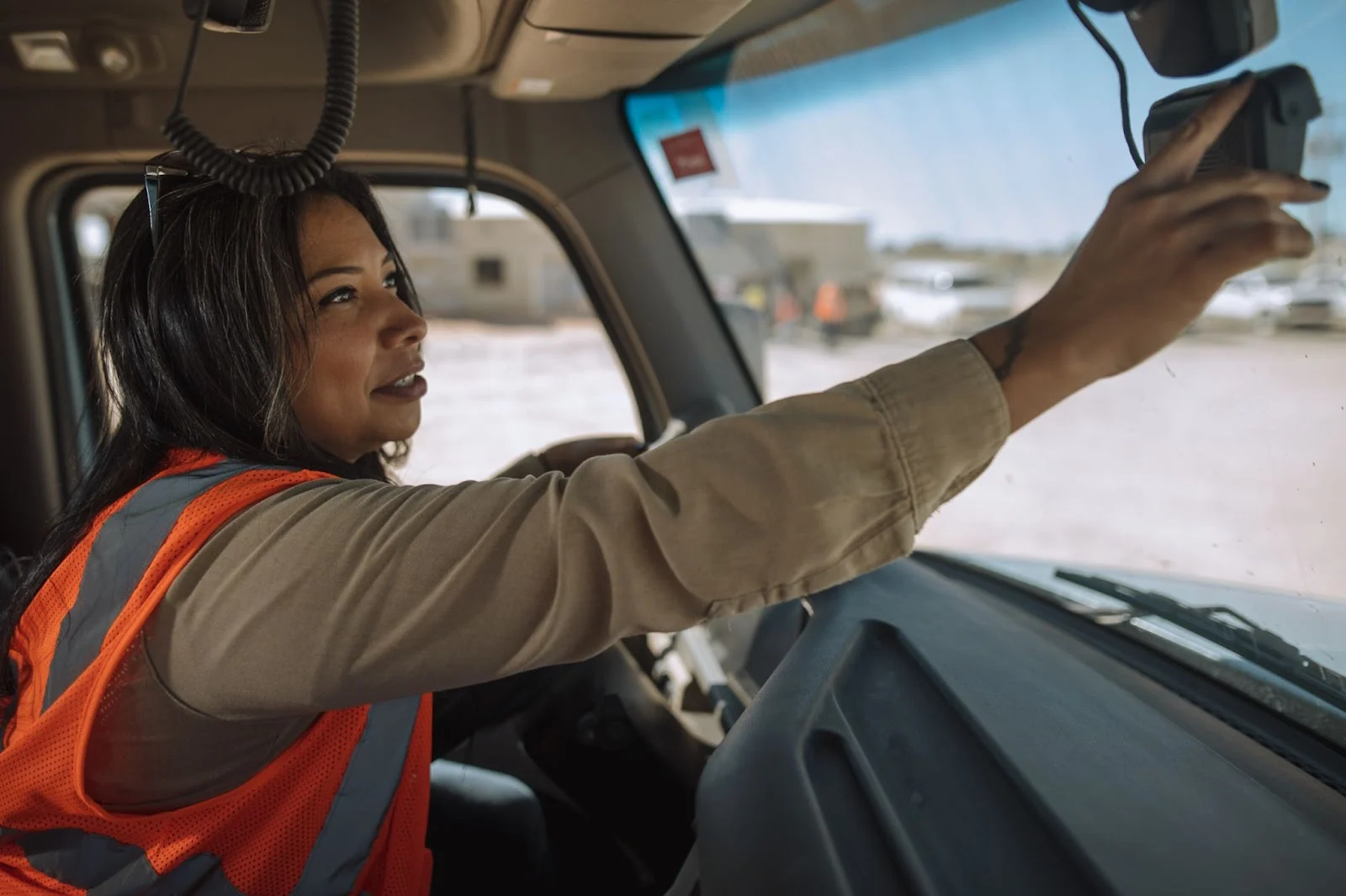Safety
Everything Local Governments Need to Know About the Safe Streets and Roads for All (SS4A) Grant Program
August 10, 2022

Get the latest from Samsara
Subscribe nowThe United States is facing a public crisis when it comes to transportation and safety—over the last decade, more than 370,000 roadway deaths related to transportation incidents occured in the U.S. There is a roadway safety problem in the U.S.—but fatal traffic injuries are preventable, and building a safer transportation system to reduce roadway incidents across the country is possible.
In May 2022, U.S. Department of Transportation (USDOT) launched the Safe Streets and Roads for All (SS4A) grant program, making $1 billion in grant funding available to U.S. local governments each fiscal year. Cities across the country will be eligible to receive funding to elevate their community’s approach to roadway safety.
Ahead of the September 15, 2022 application deadline, we break down what cities need to know about the SS4A grant program, how to apply, how to qualify for the award, and how you can partner with Samsara to improve safety.
Why is the USDOT enacting the Safe Streets and Roads for All grant program?
Roadway safety in the U.S. is an area of grave concern—in 2021 alone, more than 42,000 people were subject to fatal accidents. To alleviate the roadway safety problem, the U.S. Department of Transportation (USDOT) is rallying support around a renewed commitment to completely eliminating traffic deaths on the roads of America, part of their National Roadway Safety Strategy.
In November 2021, the Bipartisan Infrastructure Law (BIL), formally known as the Infrastructure Investment and Jobs Act (IIJA) was passed by Congress and signed into law by the president. Among many provisions, the $1.2 trillion infrastructure law provides up to $108 billion in funding for improving public transportation, the largest of such federal grants in U.S. history.
Established by the Bipartisan Infrastructure Law, the Safe Streets and Roads for All (SS4A) grant program provides resources that will enable cities across the U.S. to get one step closer to achieving zero traffic fatalities and serious injuries.
The SS4A initiative provides $5 billion in funds over the next 5 years. In fiscal year 2022 (FY22), up to $1 billion is available to cities and municipalities to use on the design and implementation of a comprehensive safety action plan, which should propose clearly defined strategies and projects that improve traffic safety in a given area, to the extent possible.
Funding from the SS4A grant can be used to make safety improvements across a wide range of infrastructure, behavioral, and operational safety programs. This includes:
Mobilizing stakeholders to build a united task force
Conducting qualitative analysis for safety-related data
Lobbying policy changes within local legislation
Assessing new technology solutions, such as safety cameras or fleet tracking systems
What types of grants are available under the SS4A program?
There are two types of grants available for funding under the SS4A program: Action Plan Grants and Implementation Grants.
For FY22 funding, an eligible applicant can apply for an Action Plan Grant or an Implementation Grant, but not both. You must complete an Action Plan first before proceeding with Implementation.
Here is what you need to know about the two types of grants:
Action Plan Grants
Action Plan Grants provide eligible applicants with funds to develop a comprehensive safety action plan.
Action plan grant award amounts will be based on estimated costs, with an expected minimum of $200,000 for all applicants, $1,000,000 for political subdivisions of states and tribal governments, and a maximum of $5,000,000 for an Metropolitan Planning Organization (MPO) or joint application comprised of a multi-jurisdictional group.
Developing an Action Plan is an important part of the application process. It should clearly specify what safety problems need to be addressed, and the intended strategies and projects you will use to solve them. Your Action Plan needs to have the following components:
Leadership and goal setting: An official public commitment (resolution, policy, ordinance, etc.) by a high-ranking local official or by a governing body to an eventual goal of zero traffic fatalities and serious injuries.
Planning structure: A committee, task force, implementation group, or similar body in charge of developing and implementing the action plan.
Safety analysis: Analysis of existing conditions and historical trends that provide a baseline level of traffic crashes in a specific location.
Engagement and collaboration: Engagement with public and private stakeholders to ensure fair representation of key community groups.
Equity considerations: The plan must be developed using inclusive and representative processes to account for underserved communities.
Policy and process changes: Evaluating current local policies or standards to identify opportunities for safety improvements.
Strategy and project selections: Identifying projects and strategies that will address problems described in the action plan.
Progress and transparency: A method to measure progress over time after an Action Plan is developed.
Implementation Grants
Implementation Grants provide eligible applicants with funds to execute specific projects and strategies as detailed in an Action Plan.
To apply for an Implementation Grant, you must have an existing Action Plan (including Vision Zero plans or local road safety plans), though funds from this grant may be used to further supplement the design of your Action Plan.
In FY22, the USDOT expects to award up to 100 implementation grants. Implementation grant awards for political subdivisions of states will be between $5,000,000 and $30,000,000. For tribal governments or applicants in rural areas, awards will be between $3,000,000.
Using these funds, you can implement safety-related projects such as:
Implementing low-cost safety treatments such as rumble strips, wider edge lines, flashing beacons, and more visible street signs.
Formalizing street names.
Setting appropriate speed limits at high-crash intersections.
Enhancing emergency vehicle warning systems.
Improving first responder services with improved crash data collection.
Making street design changes.
Conducting education and outreach for safe driving best practices.
Adopting innovative technology such as safety cameras within city fleets.
What is required to apply to the SS4A grant?
Who is eligible?
To be eligible to apply for an Action Plan Grant, you must be a member or belong to one of these organizations:
Metropolitan planning organizations;
Subdivisions of a state such as counties, cities, towns, and transit agencies or other special districts;
Federally recognized Tribal governments; or
Multijurisdictional groups comprised of the above entities.
To apply for an Implementation Grant, eligible applicants listed above must also meet at least one of the following criteria:
Have ownership and/or maintenance responsibilities over a roadway network;
Be an eligible applicant with safety responsibilities that affect roadways; or
Have agreement from the agency that has ownership and/or maintenance responsibilities for the roadway within the applicant’s jurisdiction.
How do I apply for an SS4A grant?
Before applying, you'll need to decide whether you're seeking an Action Plan Grant or Implementation Grant, since the application processes are different. You can find all grant application materials on grants.gov and you can learn more about how to apply by referring to the Notice of Funding Opportunity (NOFO).
Applications must be submitted by 5:00 PM EDT on Thursday, September 15, 2022.
To apply for the Action Plan Grant, you must include these Standard Forms:
Application for Federal Assistance (SF-424)
Budget Information for Non-Construction Programs (SF-424A)
Assurances for Non-Construction Programs (SF-424B)
Disclosure of Lobbying Activities (SF-LLL)
To apply for the Implementation Grant, you must include these Standard Forms:
Application for Federal Assistance (SF-424)
Budget Information for Construction Programs (SF-424C)
Assurances for Construction Programs (SF-424D)
Disclosure of Lobbying Activities (SF-LLL)
What are the criteria the DOT considers when selecting applicants for an award?
The USDOT will conduct separate review processes for each of the Action Plan Grant and the Implementation Grant based on an applicant’s selection criteria. Local governments that are selected for SS4A awards will be announced around the end of 2022 or early 2023.
For Action Plan Grants, the USDOT will consider the following selection criteria:
Safety impact: Strategies will likely reduce traffic fatalities and serious injuries for road users in a specific location within a given timeframe.
Equity: Strategies suggest equitable safety improvements for underserved communities in impacted zones, such as high-speed intersections and rural communities.
Additional safety considerations: The USDOT will evaluate other considerations detailed in the proposed Action Plan such as potential technical adoption, stakeholder engagement, and budget-optimized strategies.
For Implementation Grants, the USDOT will consider the following selection criteria:
Safety impact: Strategies will likely reduce traffic fatalities and serious injuries for road users. Safety impact is the most important criteria in the review process, and is weighed more heavily to account for low-cost, high impact safety projects that affect wide areas, for data analysis that measure safety impact, and for long standing safety benefits that remain over time.
Equity, engagement, and collaboration: Strategies suggest equitable safety improvements for underserved communities. This includes supporting key populations and aligning stakeholders across public and private sectors.
Effective practices and strategies: Strategies further improvements in building a safer community, embodies a Safe System Approach that minimizes human mistakes, supports the Complete Streets policy by considering the safety for all road users, and adopts innovative technology.
Climate change and sustainability, and economic competitiveness: (a) The activities as detailed in the proposed Implementation Plan contains strategies that aim for a greener transportation system by reducing the environmental impact of carbon emissions. (b) The activities as detailed in the proposed Implementation Plan creates new high-paying jobs.
Partner with Samsara to improve safety
As part of your Action Plan and/or Implementation Plan, you will need to implement innovative safety technology to elevate your community’s transportation system. Technology vendors such as Samsara can be a key component of your SS4A journey, helping local governments secure funding needed to build a driver safety program focused on accountability across their community.
You can use grant funding on Samsara’s Connected Operations Cloud to help you achieve your SS4A goals:
Improve visibility across your city fleet using AI Dash Cams. Ensure employee and citizen safety and transparency by visualizing driver events—inside the vehicle and outside on the road. The City of Syracuse used AI Dash Cams to monitor the location and status of their fleet, decreasing citizen calls by 30%.
Unify your video data across tools on a single dashboard using Camera Connector. Reduce serious injuries and traffic fatalities by consolidating video footage across all your third-party camera solutions including AI Dash Cams, side, rear, and interior cameras. The County of Santa Barbara used Camera Connector to accelerate incident investigation, saving 3-4 hours per audit incident.
Better understand speeding trends with real-time data and automate paper handling using vehicle telematics. Take a data-driven approach to safety by measuring vehicle diagnostic data and streamline file management by digitizing documents. Athens-Clarke County used vehicle telematics to increase fuel efficiency by 58% and saved more than 12,400 sheets of paper.
If you’re interested in participating in the Safe Streets and Roads for All grant program and want to see how Samsara can help, you can learn more by checking out how government agencies improve citizen safety and transparency.
Get the latest from Samsara
Subscribe now
















